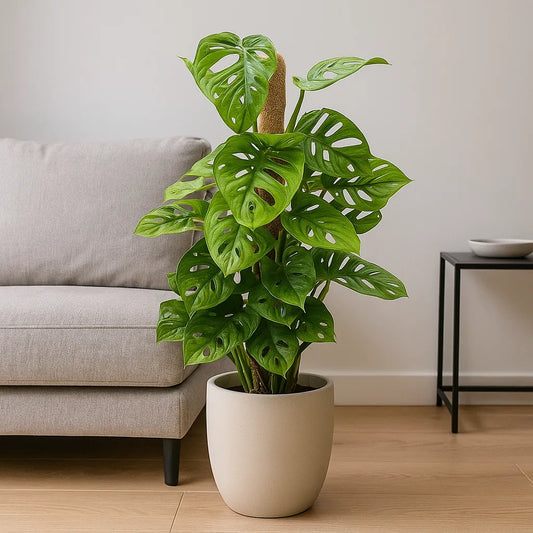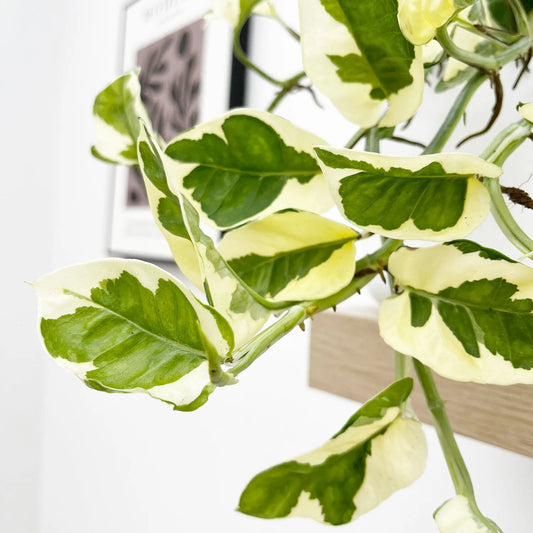Extrafloral Nectaries in houseplants, should you be concerned?
If you have houseplants from the Philodendron, Alocasia, Colocasia or any plant from the Aracae family, you may notice small, sticky drops developing on the backs of the leaves. These spots are often mistaken for damage or disease on the plant but, in fact, it’s perfectly normal! It doesn’t mean that your plant is dying. It’s called extrafloral nectaries and it’s nothing to worry about.
What are extrafloral nectaries?
Extrafloral nectaries can be found in over 90 families of flowering plants and ferns, mostly from tropical and subtropical regions - which is why you’re likely to find it on your houseplants.
What is it? Extrafloral nectaries is a type of nectar; a sugar-rich liquid which is produced by the plant to develop a symbiotic relationship with ants in the wild.
Secretory activity of extrafloral nectaries begins in young, not completely expanded organs, and extend to the leaves of the second or third mode from the base. This stops as the leaf hardens off and the spots disappear.
Extrafloral nectaries can appear in a wide range of sizes but are rarely bigger than 1mm.
Extrafloral nectaries are usually found on the leaves or petioles of the plant and are usually small and discreet. They can be identified by their different coloured border which usually appears as yellow, black, purple, green or wine-coloured.
What is the purpose of extrafloral nectaries?
When plants are growing in the wild, ants use the roots of plants to build their nests and keep the nest together.
Once the ants have built their nest, the plant takes nutrients from the next and the ant’s aggressive nature helps to protect the plant from other insects that might eat the plant, such as caterpillars.
Is it something to worry about?
The amount of nectar produced by a plant can vary and will depend on factors such as soil type, water supply, air temperature, humidity, hours of daylight and the time of day. The flow of nectar can also decrease as the plant gets older and once it has been fertilised.
In some of your plants, you may see an excessive production of nectar which can cover the surface of the leaves. While the yellow spots that are left behind can be unattractive or undesirable on your plant, it’s just a natural part of your plant’s life and is not a sign of disease or pests.











Leave a comment
Please note, comments need to be approved before they are published.